
Guichenault Point, near our campsite. Steep cliffs and red dirt are typical of Shark Bay. (AUTHOR)

Dolphins cruise over shallow sand and seagrass-covered flats typical of much of Shark Bay. Water clarity depends on the weather, but after a period of calm winds, it is easy to observe dolphins through the water surface. (ANDREW RICHARDS)
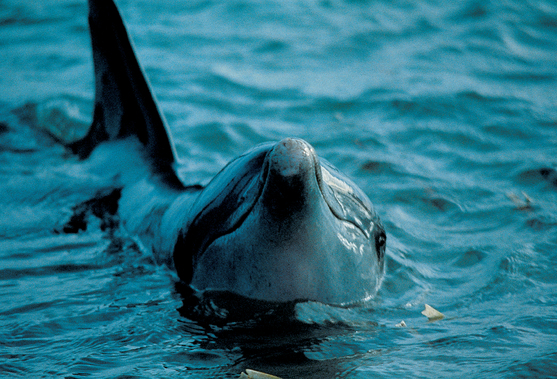
Snubnose earned his name from his upturned rostrum. (AUTHOR)
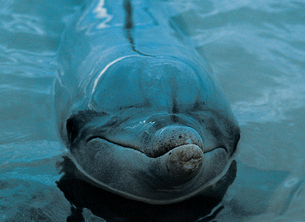
People can learn to tell dolphins apart by the natural markings on their dorsal fins, but dolphin faces are also unique. Bibi always looked a little crazy. (AUTHOR)
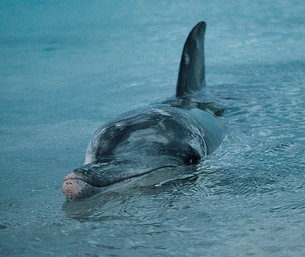
Holly bringing a piece of seagrass to play. (AUTHOR)

Puck, daughter of Crookedfin. (AUTHOR)

Nicky, daughter of Holeyfin. (ANDREW RICHARDS)
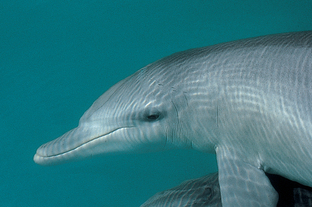
Crookedfin. A fine stream of bubbles rising from her blowhole indicates she is whistling. (ANDREW RICHARDS)
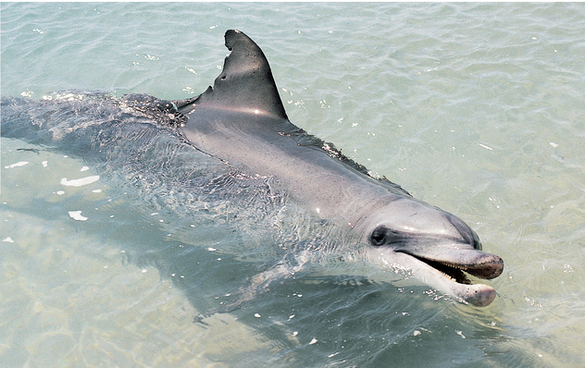
Holeyfin, the grand old lady of Monkey Mia. (AUTHOR)
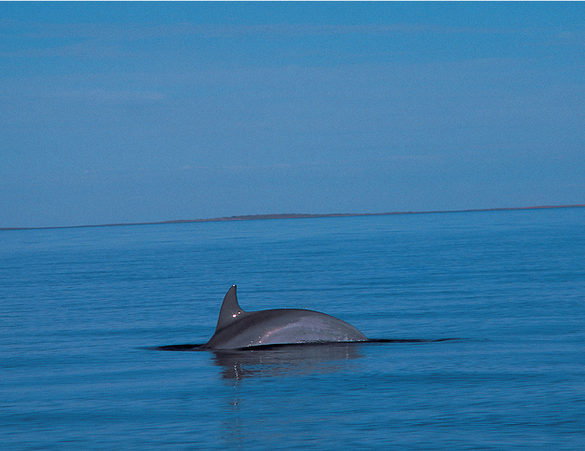
Different dive types are typical of different kinds of foraging and travel. A peduncle dive indicates the dolphin is going down at a relatively shallow angle. (AUTHOR)
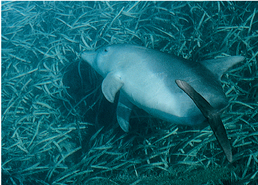
Smoky, son of Yogi, poking his rostrum into weeds on the bottom while looking for fish. We called this type of foraging “bottom grubbing.” (AUTHOR)
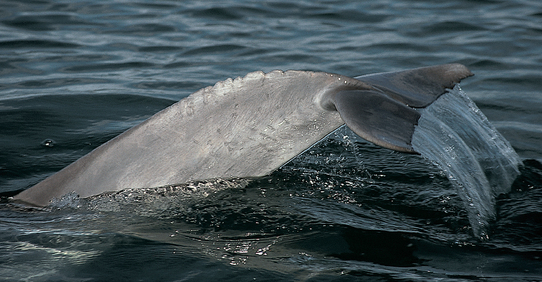
A tail-out dive indicates the dolphin is heading straight down toward the bottom. (ANDREW RICHARDS)

Dolphins in Shark Bay leap and “porpoise” (surface rapidly with the back exposed but the belly still in water) while foraging after schooling fish. Dolphins are attracted to leap and porpoise feeding from all around. (AUTHOR)
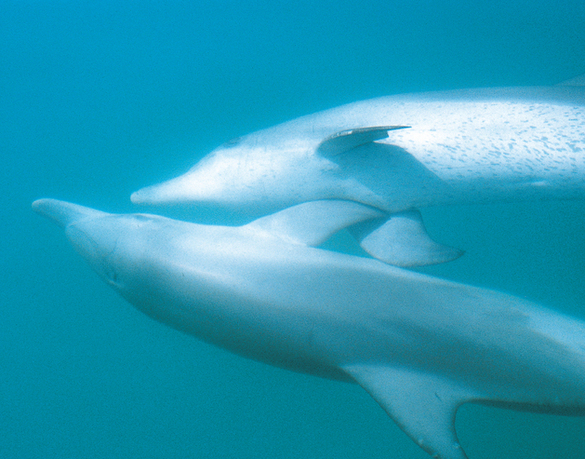
Holeyfin and her daughter, Holly, petting. (BARBARA SMUTS)
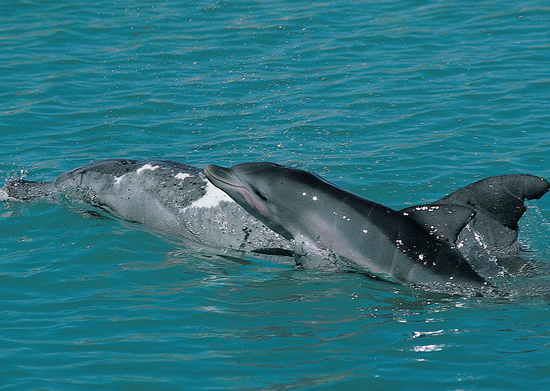
Holeyfin with her newborn calf, Nova. Note the scars on Holeyfin’s back from the sunburn incident. Nova still has “birth rings,” or fetal folds surrounding his body.
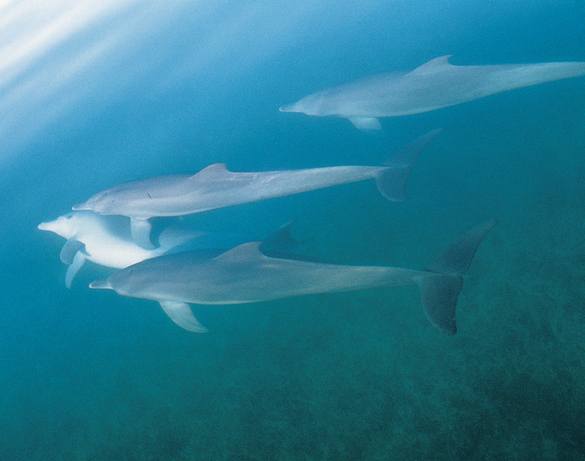
Dolphins pet and rub. (AUTHOR)

When dolphins rolled belly up, we could see both their genitals (and therefore determine their sex) and their belly speckles, an indicator of age. This dolphin is Bibi, a young adult male. (ANDREW RICHARDS)

Shark Bay is a place of spectacular sunsets — complete with leaping dolphins. (AUTHOR)
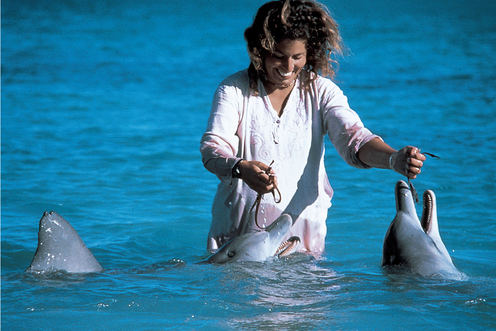
Playing with wild dolphins in their own element is not only fun but also provides a good opportunity to learn about the dolphins’ manners, expressions, moods, and creativity. (ANDREW RICHARDS)

The three “tame” males — Snubnose, Bibi, and Sicklefin — beg for fish handouts from people in the shallow waters at Monkey Mia. (AUTHOR)
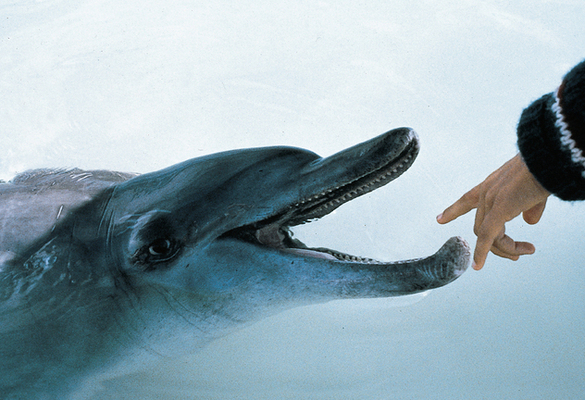
Dolphins and humans have interacted at Monkey Mia since at least the 1950s, and possibly much longer. (BARBARA SMUTS)

The author and Andrew Richards at “old camp.” (BARBARA SMUTS)
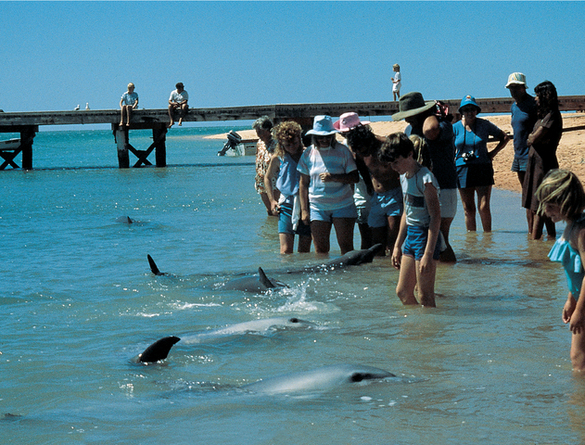
A typical scene with dolphins and people in the shallows at Monkey Mia. (AUTHOR)

Andrew sitting on the bow of his boat, watching a bowriding dolphin. (PHOTOGRAPH COURTESY OF ANDREW RICHARDS)
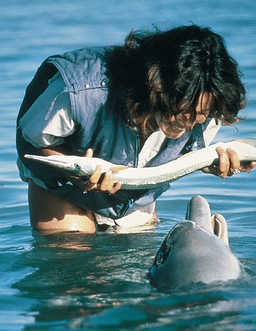
Nicki-the-human offers a Long Tom fish to a dolphin. Long Toms skitter across the water surface on their tails in an attempt to escape capture. (AUTHOR)
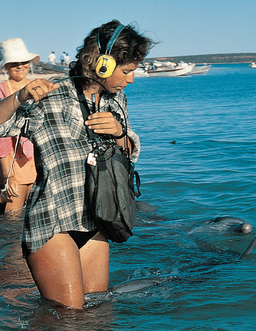
The author recording dolphin vocalizations in the shallows at Monkey Mia. (ANDREW RICHARDS)

Holeyfin and Holly, mother and daughter, playing keep-away with a piece of seagrass. (AUTHOR)

Dolphins playing with seagrass. (AUTHOR)
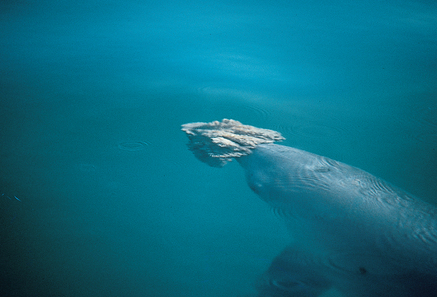
Halfluke carrying a large sponge. (AUTHOR)
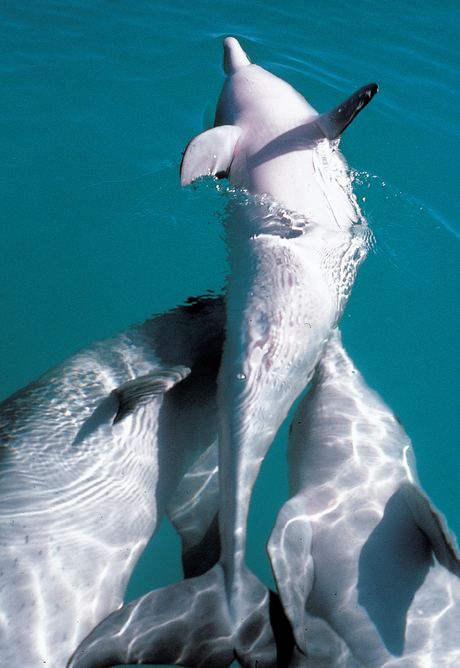
Nicky and Puck “goose” Holly as they all ride at the bow of our boat. (AUTHOR)
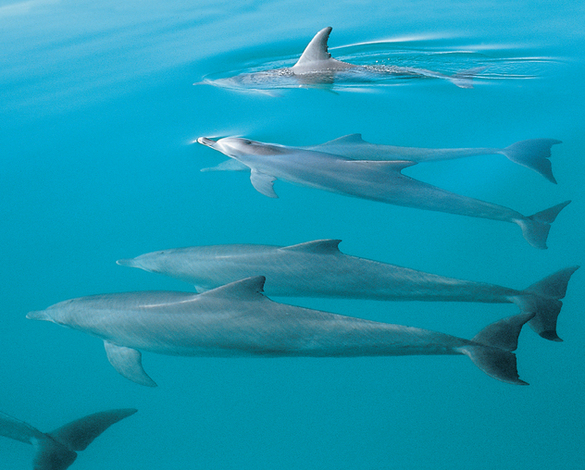
Two alliances of males, Chop-Bottomhook-Lambda and Trips-Bite-Cetus, travel together in a “superalliance.” Slight differences in interdolphin distance and surfacing synchrony indicate relationships. (ANDREW RICHARDS)

Two males, Trips and Cetus, pursue a female, Yogi. (AUTHOR)

Two males synchronously press their genitals against the sides of a female they are herding. (ANDREW RICHARDS)

A synchronous surfacing by two allied males. (ANDREW RICHARDS)

Two males, Realnotch and Hi, in rank formation behind the female, Puck. (AUTHOR)
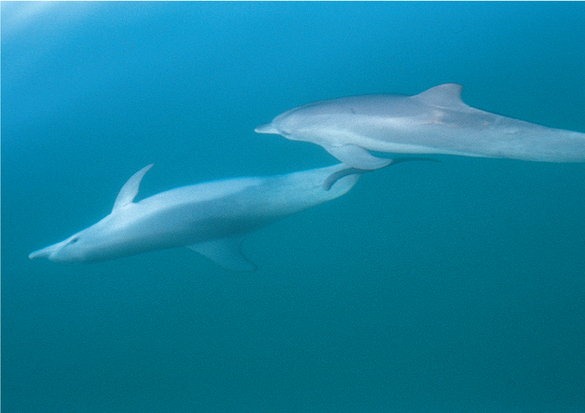
Petting and rubbing is an important part of dolphin social behavior. A young female, Joysfriend, is kneel-rubbing on Lucky’s pectoral fin. (AUTHOR)